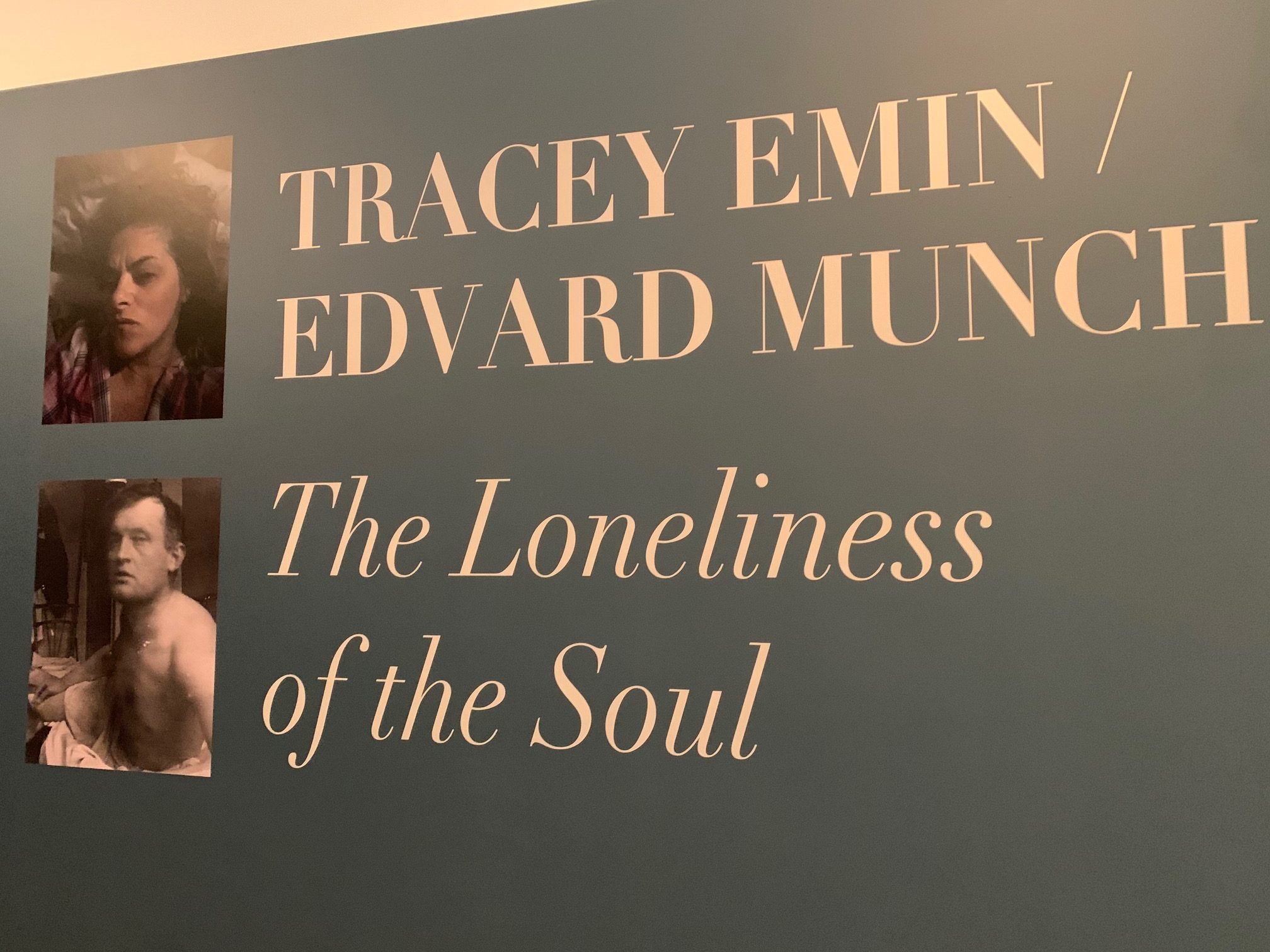The bad girl of British art Tracey Emin was in the final stages of preparing her exhibition for the Royal Academy in 2020 alongside work of her hero Edvard Munch. Then she was struck down with an aggressive form of cancer and had several organs removed. She wasn’t expected to survive and just nine days after the opening, the exhibition was closed for six months due to Covid, an experience she found heartbreaking because it had meant so much to her. The RA describes the exhibition as an exploration of grief, loss and longing.
In laying down its policy on Covid restrictions, the British Government ranked galleries and museums alongside nightclubs – a strategy Emin found extraordinary and which she attributes to most politicians having never visited a gallery or museum.
A painter, drawer, sculptor, photographer who works in a variety of media, Tracey Emin became the best known and most controversial of the young British artists who emerged in the late 1990’s. Her work is largely autobiographical and speaks broadly of the female experience.
Emin once claimed that she had been in love with Munch since she was 18. Munch died in 1944. His work which she chose for the exhibition is, she argues, more soulful and mournful than his better known work (such as The Scream) and about women and the emotions they go through, which made him a very unique artist in his time.
In an interview to accompany the exhibition The Loneliness Of The Soul, it was suggested to her that Munch’s work portrays the tragedy of women whereas Emin’s work speaks of their resilience. She responded by saying that she has experienced tragedy in her life which has featured in her work. One only has to think of works such as “My Bed” which she entered in the 1998 Turner Prize. The bed is littered with condoms, cigarette butts, empty vodka bottles etc. and references disastrous sexual experiences and the aftermath. She refers to the hostility and derision that her work received – one irate critic complained that anyone can submit a bed to an exhibition. Emin’s response is a classic “well they didn’t, did they”.
My Bed, 1998
She believes that 30 years ago, Munch’s paintings weren’t taken seriously and that The Scream was regarded as a cartoon joke. But now that there is a greater awareness of the issues many women have to face, there is a greater respect for his work.
Emin explained that what she went through with her cancer treatment was like surviving a plane crash, and she is so grateful to have survived and for every single moment. She now seems a happier and content person.
When I slept I longed ForYou
The issue of rape and sexual violence that appears so often in Emin’s work was raised during the interview. She came up with an interesting expression. When she was at school in the 1970’s school girls would speak of being broken into last night, and they weren’t referring to burglary. They were referring to their first (most likely unwanted) sexual encounter and this was taken for granted. Emin claims to have been raped more than once back then and the real issue for her was the aftermath, which included wanting to sleep with just about every guy in her home town of Margate as a revenge and to empower herself sexually. But she realised that this was diabolical for her self-esteem.
Tracey Emin at White Cube Gallery
After viewing her work, many girls and young women have written to Emin discussing their own disastrous sexual experiences which often resulted in abortions. Now with the Me Too movement and with women being more open about discussing these issues, she believes that people are starting to pay attention. But with her confronting work dating back decades Emin was, arguably, well ahead of the whole movement.
Now that she has recovered from her cancer, which included being bed ridden for 3 months, she is planning to open her own art school and residency in Margate where smoking and excessive noise will not be tolerated. The new Tracey.
References;
BBC Newsnight
The Royal Academy
ZCZ Films







